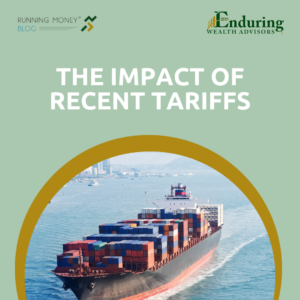 Recently tariffs were placed on Mexico, China, and Canada. The United States imposed a 25% tariff on imports from Mexico and Canada with a reduced 10% tariff on Canadian energy. China received a 10% tariff imposed on imported goods to the U.S. However, the tariffs imposed against Mexico and Canada were paused for 30 days after a deal was made with the nations’ leaders who agreed to beef up security along the northern and southern borders.
Recently tariffs were placed on Mexico, China, and Canada. The United States imposed a 25% tariff on imports from Mexico and Canada with a reduced 10% tariff on Canadian energy. China received a 10% tariff imposed on imported goods to the U.S. However, the tariffs imposed against Mexico and Canada were paused for 30 days after a deal was made with the nations’ leaders who agreed to beef up security along the northern and southern borders.
What is a tariff?
According to the International Trade Administration, a tariff is a tax imposed by governments on the value including freight and insurance of imported goods.
Why does the government impose tariffs?
Governments impose tariffs for several reasons. These include:
- Generate revenue
- Tariffs help the government earn money. Before the creation of the federal income tax in 1913, tariffs were a significant form of revenue.
- Help domestic industries
- Tariffs help to safeguard domestic companies from international competition. Tariffs particularly help startups gain traction as more than 20% of them fail after a year.
- Put pressure on other countries
- Tariffs can be used as leverage on immigration and the continued war on drugs by putting pressure on other countries to self-police.
- National security
- Tariffs may be placed on industries involved with segments of the U.S. economy that produce products essential to our national defense.
How do tariffs impact regular consumers?
The impact tariffs may have on regular consumers could mean temporary price increases and lower supply availability until production in the U.S. increases to make up the difference. Consumers don’t pay tariffs directly; however, they are touched by the increase in the cost of transporting goods to their final destination in retail price hikes. Economists have forecasted that this could be the outcome for a while after the tariffs go into effect. Some of the industries impacted by the tariffs include clothing, produce, auto parts, and liquor coming from Mexico, computer chips, plastics, and textiles from China, and lumber and oil from Canada.
According to a report by the Associated Press, chief economist at the tax and consulting firm, Gregory Daco, believes inflation could see an increase of at least 0.4 percentage points this year, therefore driving the economy down by around 1.5%. This translates to the tariffs costing the average American household about $1,000 to $1,200 in annual purchasing power as estimated by the Budget Lab at Yale University.
Do you have concerns?
If you are concerned about the volatile markets and how these tariffs may impact you personally, schedule an appointment with your financial professional to discuss strategies you can take to try and lessen the effects of the tariffs trickling down to you and your financial goals. Don’t wait. Make an appointment today.
Important Disclosures:
Content in this material is for educational and general information only and not intended to provide specific advice or recommendations for any individual.
All information is believed to be from reliable sources; however, LPL Financial makes no representation as to its completeness or accuracy.
This article was prepared by Marketing Solutions.
LPL Tracking #692392
Sources:
What are tariffs, and why does Donald Trump want them?
How tariffs on Canada, China and Mexico may impact U.S. consumers
Import Tariffs & Fees Overview and Resources
What Are Common Reasons for Governments to Implement Tariffs?
President Donald Trump agrees to pause tariffs on Mexico and Canada | AP News
